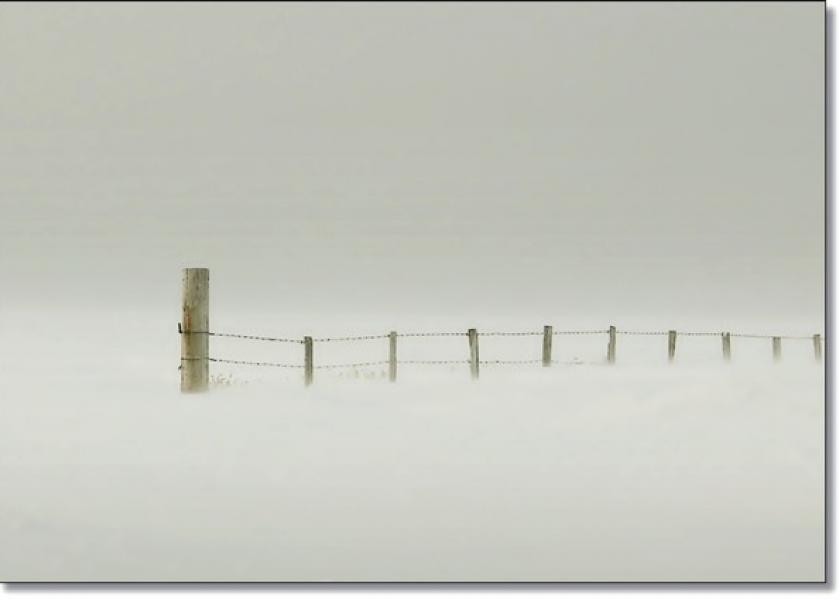North Dakota Rancher Braces For Crippling Blizzard That Could Be Catastrophic During Calving Season

Farming and ranching in North Dakota the past two years has been immersed in challenges. With the latest forecast, farmers are weathering yet another challenge as they prepare for a blizzard that could bring 50 mph winds and up to 30" of snow.
Central North Dakota seems to be the bullseye for the blizzard, with forecasts showing that area could see more than two feet of snow, along with winds that could cause white-out conditions.
Farmers and livestock producers are desperate for the moisture, but the snow and the wind will be a battle for livestock this week. Just ahead of the storm, Austin Langley was busy putting out extra hay bales for his cattle. A week ago, he was thinking about planting wheat and barley. But as the forecast changed, Langley had to pivot quickly.
“We have a little under 1,000 mama cows that are calving,” says Langley, who farms with his dad and uncle. “The snow is going to be a challenge along with the fact they said something like 50 mph winds. You can haul the newborns in as fast as you can, but what has my stomach turning into knots is the whole next week with temps below 30 and in the low teens for this coming weekend, too.”
The storm is expected to hit Tuesday and continue to rage across the upper Midwest through Thursday. Mid-April is later than many ranchers calve, but the Langleys started aiming for mid-April, since it’s typically milder and less of a chance for major snowstorms.
This week’s forecast is the worst case, with Langley worried about the newborn calves surviving the snow and cold. He’s also concerned about how he will navigate the white-out conditions to reach the calves in time.
“After these calves get 2’ of snow dumped on them and then it stays cold, it's hard,” says Langley. “It's going to be hard to keep them healthy. It's going to be hard to keep things alive.”
Monday morning update:
⚠ Blizzard Warning in effect for western and much of central ND
❄ Snowfall amounts could exceed 24" in some places, with wind gusts up to 50 mph
? Uncertainty in the far south central and JRV due to more rain possibly decreasing snow totals #ndwx pic.twitter.com/AZ95CknLSC — NWS Bismarck (@NWSBismarck) April 11, 2022
More than half of North Dakota is still facing drought. Thankfully, Langley is in an area that has seen some moisture. While still faced with a deficit, he knows he needs moisture, but a blizzard could do lasting damage on their herd this time of year.
“We're focused on the cows right now,” says Langley ahead of the winter storm. “We’re getting some of the calves that are a little bit older into some of the secondary spring pastures that have some good ravine coverage with brush, because we're going to have our hands full with the newborns. So that's kind of the plan right now making sure we can keep water to keep water and feed to the cows. Hopefully things will be turn out OK.”
The last time the area saw a mammoth winter storm this late was 1997. Langley says the most recent forecasts are drawing vivid memories of that year for some, along with advice.
“I was visiting with some with an older rancher, and he said, ‘Don't kill yourself for the one calf. You have to triage. Your family and the rest of the herd are going to need you after this. So be careful out there,” says Langley.
In 1997, ranchers remember using snowmobiles to get to their animals. With the blizzard conditions, tractors weren’t even enough to get the job done. The power also went out for several days.
Typically, Langley would be in the field later this month planting barley and wheat. He says now it will be well into May before they can plant, and there’s some questioning just how much beneficial moisture will blanket the soils, considering the storm could bring such strong winds.
“With 1’ or 2’ of snow at 50 mph winds, where's that going to end up? Is it going to end up in the ditches and in the valleys? So how beneficial is it really going to be,” he says.
Since grain farmers are on hold doing any field work this week, two of Langley’s friends, who also farm, are going to help them with the cattle this week. That’s as the agriculture community continues to come together and assist when needed most.







